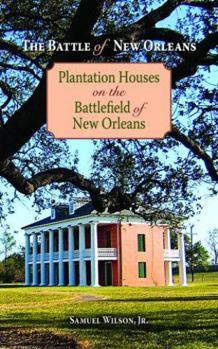The Battle of New Orleans: Plantation Houses on the Battlefield of New Orleans
This guide covers the plantation homes present on the battlefield during the British campaign of 1814-1815, the last major conflict of the War of 1812. The nine properties mentioned span a six-mile stretch along the east bank of the Mississippi River in an area known as Pointe St. Antoine, which derives its name from the bend in the river. Though the plantations no longer stand, their historical significance remains.
A thorough examination of each home includes a history of ownership, based on data from public records and newspapers, along with explanations of what happened to the property. Firsthand narratives describe individual characteristics of each house. The book includes eighteenth-century maps of the French colony, images depicting the positions of the British and American Army during the battle, period photographs and illustrations, and floor plans of the plantation homes.
Sections include such homes as the Macarty Plantation, which was once Andrew Jackson's headquarters before becoming the home of Henry L. Beauregard, son of the Confederate general, at the end of the nineteenth century. De La Ronde Plantation is the only property with surviving remains. This home is architecturally significant because it is especially large for a French colonial plantation and it uses different-sized bricks from the first story to the second. The book ends with the final plantation on the stretch, the Jumonville plantation. Owned by one the oldest French-Canadian families in Louisiana, this extensive piece of property contained a sugar mill, stables, and a bakery, along with temporary British hospitals during battle.





